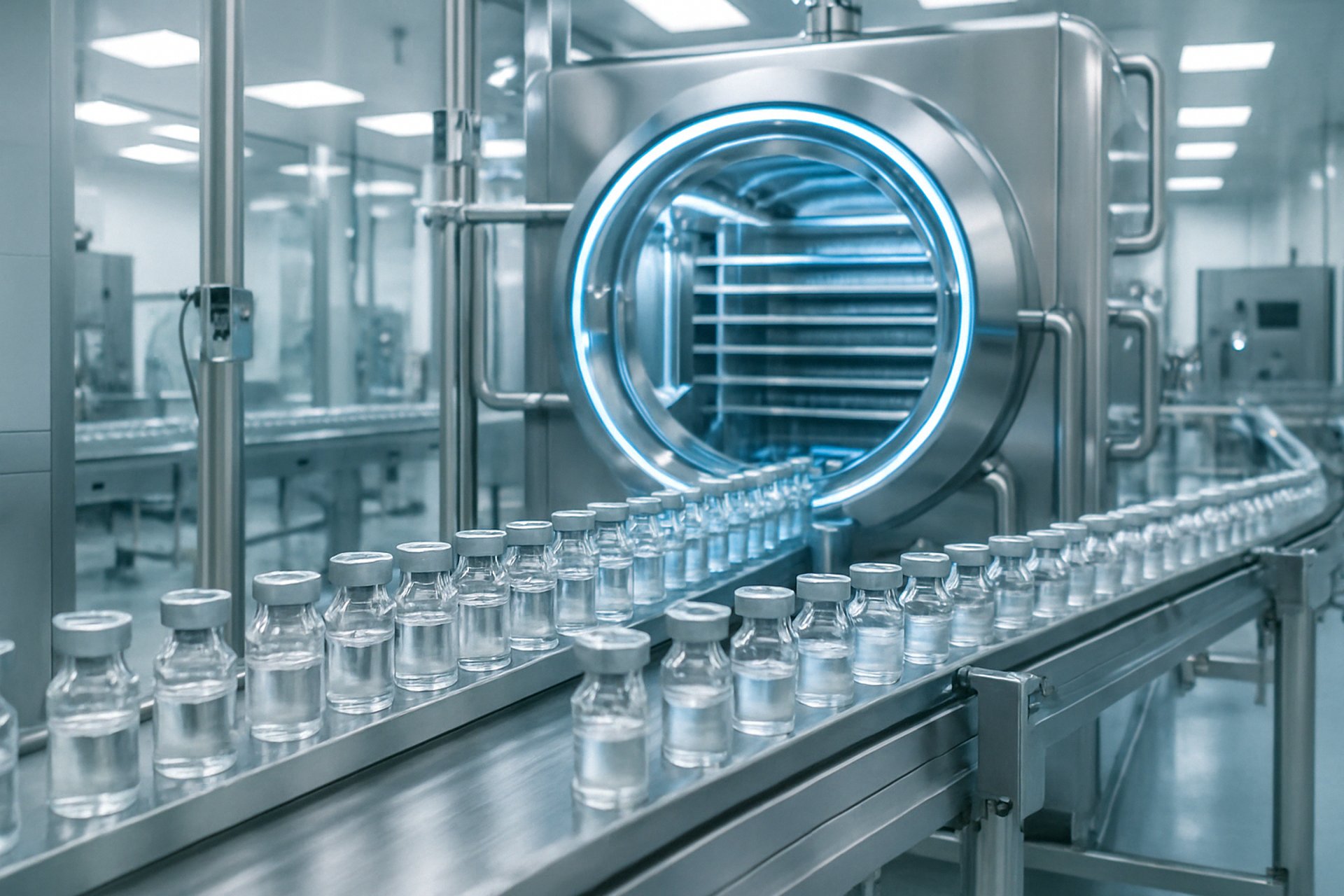
The Big Chill Gets Smarter: AI, Continuous Processing, and Sustainability Set to Revolutionize Lyophilization
NEWS
Dateline: 15/04/2025 – Lyophilization, the gold standard for preserving sensitive pharmaceuticals, biologics, and high-value food products, is on the verge of a significant transformation. Long perceived as a slow, energy-intensive, batch-based process, freeze-drying is poised to become faster, greener, more intelligent, and increasingly adaptable, driven by technological advancements and evolving market demands.
Industry experts predict a future where lyophilization sheds its image as a necessary bottleneck, becoming a highly optimized and integrated part of manufacturing. Several key trends are shaping this evolution:
1. The Rise of Continuous Lyophilization:
The shift from traditional batch processing to continuous manufacturing is gaining momentum. While true end-to-end continuous lyophilization remains challenging, hybrid and fully continuous systems are moving from laboratories to pilot scale. Technologies like spray freeze-drying (SFD) and continuous shelf-transfer systems promise dramatic increases in throughput, reduced facility footprints, and improved product consistency compared to lengthy batch cycles.
"Batch lyophilization has served us well, but its limitations in speed and flexibility are becoming increasingly apparent, especially with the rise of personalized medicine and the need for rapid vaccine production," says Dr. Evelyn Reed, a leading process development scientist. "Continuous methods offer the potential to slash drying times from days to hours, or even minutes in some cases."
2. AI and Machine Learning Take Control:
Artificial intelligence (AI) and machine learning (ML) are set to become indispensable tools. Algorithms are being developed to:
* Optimize Cycle Development: Predict optimal freezing rates, primary drying temperatures/pressures, and secondary drying times based on formulation properties, reducing development time significantly.
* Enable Real-Time Adaptive Control: Use data from advanced Process Analytical Technology (PAT) sensors (like wireless temperature sensors, mass spectrometry for vapor monitoring, and imaging) to adjust cycle parameters dynamically, ensuring quality and compensating for variability.
* Predictive Maintenance: Analyze equipment performance data to anticipate potential failures, minimizing costly downtime.
"We're moving beyond simple process monitoring to predictive and adaptive control," notes David Chen, Head of Manufacturing Innovation at a major pharmaceutical firm. "AI allows us to understand the complex interplay of variables inside the freeze-dryer like never before, leading to truly optimized, robust cycles."
3. Sustainability Becomes Non-Negotiable:
Lyophilization is notoriously energy-hungry. Future trends focus heavily on reducing its environmental footprint:
* Energy Recovery Systems: Implementing systems to capture and reuse waste heat.
* Improved Equipment Design: Better insulation, more efficient refrigeration and vacuum systems.
* Alternative Energy Integration: Exploring the use of renewable energy sources to power lyophilization units.
* Novel Drying Mechanisms: Research into microwave-assisted or atmospheric freeze-drying techniques could potentially reduce energy consumption, though significant technical hurdles remain.
4. Expanding Applications & Formulation Innovation:
While critical for biologics like monoclonal antibodies and vaccines, lyophilization is finding new applications:
* Cell and Gene Therapies: Stabilizing complex cellular products requires highly controlled and gentle preservation methods, driving innovation in lyo techniques.
* Diagnostics: Lyophilized reagents offer stability for point-of-care diagnostic kits.
* High-End Food & Nutraceuticals: Preserving delicate flavors, textures, and bioactive compounds in premium food ingredients and supplements.
Alongside this, formulation science is advancing, with novel excipients and AI-assisted formulation design aiming to create products that are inherently easier and faster to freeze-dry while maintaining maximum stability and efficacy.
5. Integration with Advanced Delivery Systems:
Future lyophilized products might be increasingly designed for specific delivery devices, such as pre-filled dual-chamber syringes or cartridges, requiring co-development of the formulation, the lyophilization process, and the final delivery system for seamless reconstitution and administration.
Challenges Remain:
Despite the promising outlook, challenges persist. The high capital cost of new equipment, the need for rigorous validation of novel processes and AI algorithms, and evolving regulatory expectations require careful navigation.
The Outlook:
The future of lyophilization looks dynamic. It's evolving from a somewhat static preservation technique into an intelligent, efficient, and sustainable process integral to advanced manufacturing. Companies that embrace these innovations stand to gain significant advantages in speed-to-market, operational efficiency, product quality, and environmental responsibility. The "big chill" is definitely heating up with innovation.
